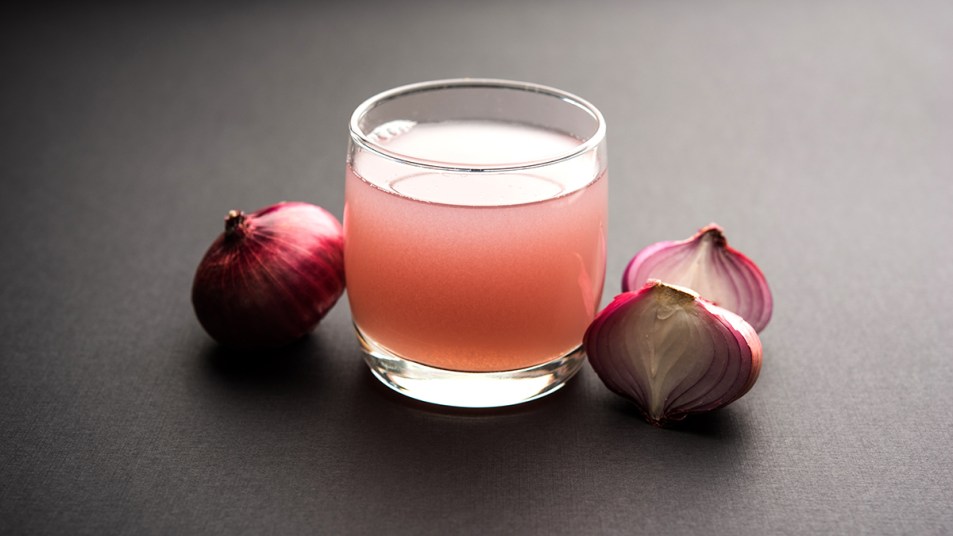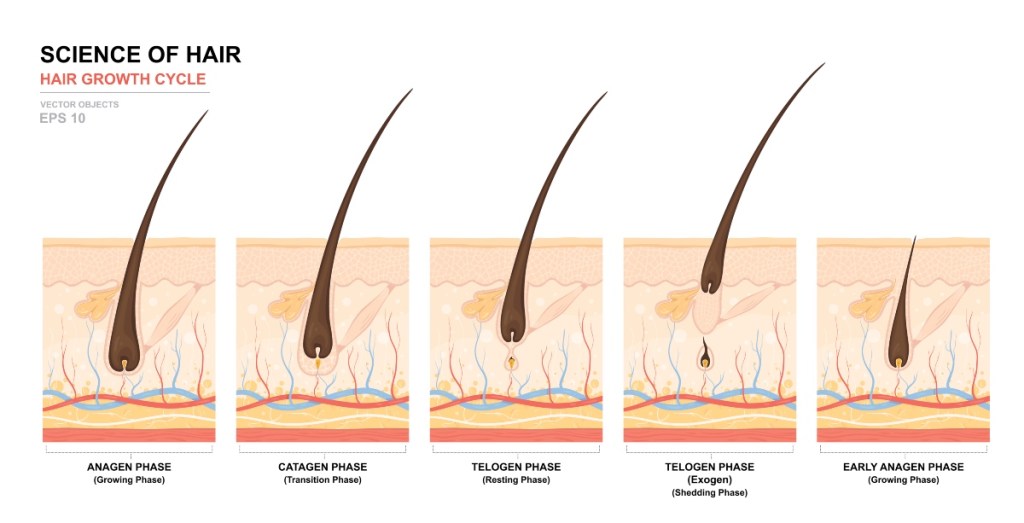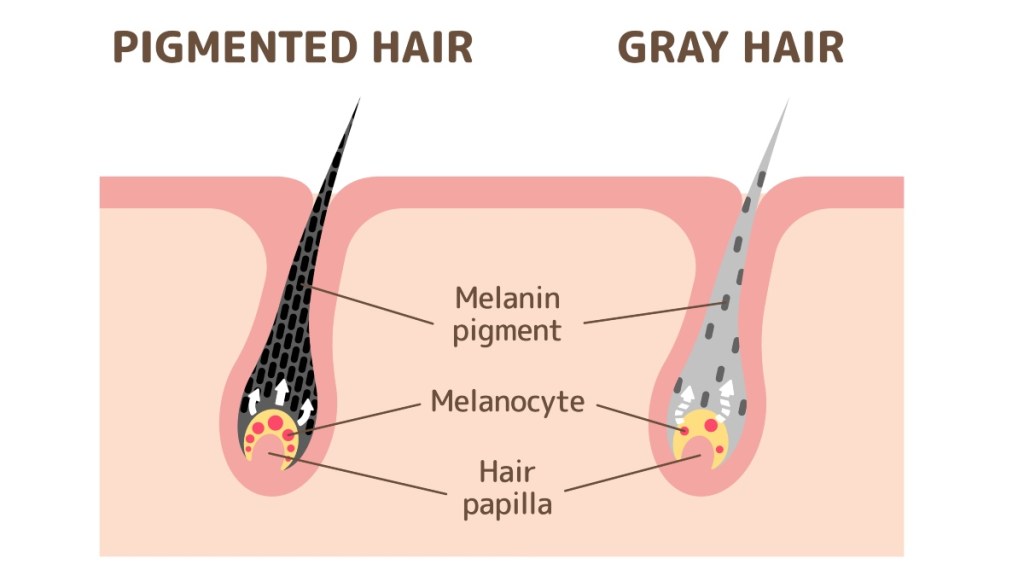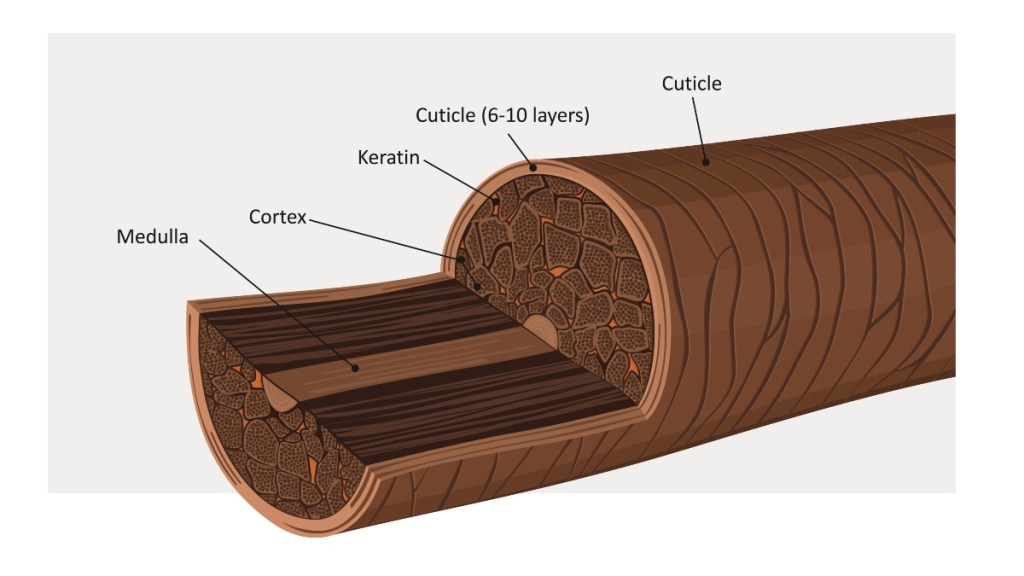News: Kitchen Staple Reverses Thinning Hair + Slows Down Graying — For Pennies A Day!
Study: 87% of people who washed their scalps with onion juice experienced significant hair regrowth

Regrow thick, shiny, healthy hair with a few onions you tossed in the blender? Yes, say researchers publishing in the Journal of Dermatology, who found that simply applying blended up onions to your scalp produces greater benefits than pricey specialty hair loss products. That finding would come as no surprise to ancient Romans. One of the earliest texts referencing the natural remedy dates back to the 1st century, when Pliny the Elder suggested mixing onion with honey or vinegar to treat hair loss.
Today, the humble, healing onion is experiencing a resurgence in popularity, thanks to the new research that confirms its effectiveness in promoting hair growth — and to viral posts on TikTok and Instagram. Case in point: rapper Cardi B. posted about her success washing her hair with onion water on Instagram — it’s hard to deny that shine!
Keep reading for an overview of the most common causes of hair loss, the science that supports using onion juice to reverse it and an easy how-to so you can reap the benefits for pennies a day.
The most common causes of hair loss
Even if you notice more shedding than usual right now, it doesn’t mean you’re resigned to sparser strands forever. Here’s a look at some of the most common hair loss triggers:
1.) Aging and menopause
It’s no surprise that getting older is one of the most common causes of hair loss. As you age, your natural hair growth cycle slows, leading to a reduction in hair thickness and density. Simply put, the body isn’t able to keep up with producing new strands as quickly as older strands fall out. What’s more, individual hair strands become smaller, making hair appear less thick and lush than it once did.
For women, menopause can accelerate this process. “Hormonal imbalances experienced during menopause can contribute to hair loss as levels of estrogen, which supports hair growth, decline,” says Anna Chacon, MD, and board-certified dermatologist. It’s so common, hair loss affects up to 60% of women during menopause, a study in Menopause Review suggests.
2.) Both chronic and extreme stress
Researchers at Harvard University found that chronic stress, the kind of tension that lingers for weeks or months, can significantly slow hair growth. The investigators explain that stress increases levels of corticosterone, a hormone that prevents the release of a follicle-stimulating molecule known as GAS6.
Sudden or extreme stress, like the kind you’d experience losing a loved one or your job, can also accelerate hair loss. It’s a phenomenon researchers have dubbed telogen effluvium. It pushes follicles into a resting phase, which can lead to rapid fall out or even clumps of hair loss. Though it might seem alarming, experts say this type of hair loss is temporary and normal growth usually picks back up as your stress fades.

3.) The change of seasons
A lesser-known cause of sparse strands: Seasonal shifts. Fluctuations in temperature and humidity levels can affect the hair growth cycle, leading to a condition known as seasonal hair shedding. A study published in Dermatology found that hair growth is typically slowest in winter and fastest in summer. If you notice more strands in your hair brush during those seasonal shifts, it’s because your hair is being pushed into its shedding phase.
4.) Key nutrient deficiencies
“Iron, biotin, protein, and zinc are all critical for hair health,” reveals Dr. Chacon. “Iron helps red blood cells carry oxygen to hair follicles, biotin and protein are building blocks for hair, and zinc helps with tissue growth and repair, including hair growth.” And since research in the Journal of Nutrition, Health & Aging found up to 46% of adults are deficient in protein alone, it’s no wonder that a nutrient shortfall is one of the top sneaky causes of hair loss.
How onion juice promotes hair growth
You know onions make a great pizza topping and pack a tasty punch in soup, but how exactly do they work their magic on your hair? According to Dr. Chacon, it’s largely due to onion juice’s anti-inflammatory properties.
“Quercetin, a powerful antioxidant found in onions, may help to reduce inflammation and fight free radicals, thus potentially alleviating inflammatory conditions,” says Dr. Chacon. “It also stimulates the scalp to produce more of an enzyme called catalase. Catalase helps break down hydrogen peroxide, a chemical that can damage cells and cause hair thinning.”
Proof it works: A study in the Journal of Dermatology found that when folks with hair loss washed their scalps with onion juice twice daily, 87% experienced hair regrowth within six weeks. And some even started to report new growth in as little as two weeks.
How onion juice slows down hair graying
And preventing hair loss isn’t the only trick up this veggie’s sleeve: The catalase in onion can also help fight back against gray hairs, a study The FASEB Journal suggests. “Hydrogen peroxide accumulation in the hair follicles can lead to oxidative stress, which can cause hair to turn gray,” explains Dr. Chacon. It works by reducing the amount of melanin, or pigment, in hair strands. Hair with little to no melanin left appears gray or white. “By breaking down hydrogen peroxide, catalase can potentially help to slow down the graying process.” (Embracing gray hair? Click through to find out how to keep it shiny and healthy)

The best ways to use onion juice for hair growth
When it comes to tapping into the power of onion juice for hair growth, there are two easy ways to reap the benefits: A DIY treatment or store-bought products infused with onion juice.
Option 1: A homemade onion juice scalp treatment boosts hair growth
You don’t have to be a beauty guru to whip up an onion juice tonic to boost hair growth. All you need is a few onions and a blender! Here, a quick and easy recipe from licensed cosmetologist Anna Peterson, creator of Salon Route.
- Dice two medium-sized onions and blitz in a blender until you get a smooth pulp. Strain the juice into a bowl or jar. Tip: You can add a few drops of essential oil (such as rosemary, lavender, or lemon) to the liquid to reduce the onion odor during application.
- Using a cotton ball, apply the onion juice directly onto your scalp, ensuring it covers the roots. Cover with a shower cap if desired, then let it sit for 30 minutes.
- Thoroughly wash your hair with a mild shampoo. And don’t worry about any lingering odor! Any leftover onion-y smell will disappear after a quick shampoo. For best results, repeat twice a week.
Sensitive skin? Peterson suggests conducting a patch test first, as onion juice may cause redness or itching. “If you experience such reactions, dilute it with water or combine it with honey to reduce irritation,” she suggests.
Option 2: Onion oil shampoo and conditioner boost hair growth
Not into DIY recipes? You can still harness the power of onion juice for hair growth by using an onion oil shampoo and conditioner daily. One we like: WOW Skin Science Onion Black Seed Oil Shampoo & Conditioner Set (Buy from Amazon.com, $25.95). The duo contains red onion black seed oil as well as sweet almond oil, Vitamin B5, and argan oil to boost hair strength and shine. As with the homemade recipe, you can set aside fears of a lingering unpleasant odor. Several reviewers noted that this set does not smell like onion and carries a soft and pleasant floral scent.
Other natural ways to increase hair growth
To speed your results, we’ve rounded up a few of the best study-backed remedies proven to halt hair loss and spark new growth.
Savor a protein-packed breakfast
Your hair tends to grow faster in the morning, according to University of Southern California research, since your body clock tells hair-producing cells that it’s time to increase cell division that naturally slowed overnight. That’s why powering up your follicles first thing is one of the easiest ways to encourage healthy growth. Your best bet: A hearty dish made with eggs. Eggs increase your body’s ability to produce keratin, the protein that makes up hair strands. That’s something research in The Scientific World Journal suggests makes hair 34% stronger within 60 days and reduces shedding up to 47%. Bonus: Increasing your keratin intake has also been shown to improve hair’s shininess and brightness. (Click through to our sister site to find out the simple hack that guarantees extra-fluffy scrambled eggs)

Treat yourself to a scalp massage
This simple and relaxing method can be a powerful technique to stimulate hair growth and improve the overall health of your hair, according to Dr. Chacon. When you massage your scalp, you increase blood circulation to the hair follicles. Plus, a quick rub helps unclog hair follicles and removes excess sebum, allowing new hair to grow unimpeded.
A study in the journal ePlasty found folks who spent a few massaging their scalps daily significantly increased hair thickness. What’s more, University of California, Berkeley, researchers revealed that a daily scalp rub reversed hair thinning for up to 69% of folks.
For the best results, use your fingertips to massage your scalp in circular motions. Tip: to boost the benefits, massage your scalp with a few drops of diluted rosemary oil. Research in the journal SKINmed found it boosts hair growth as effectively as the gold-standard treatment minoxidil.
Tap into the power of a pine tree
A study in Health Science Reports found that supplementing daily with pycnogenol, a compound sourced from the bark of French pine trees, boosts hair thickness by as much as 30% in two months. Researchers say the compound increases nourishing microcirculation to the tiny capillaries in the scalp by 44%. Thick enables hair to grow thicker and healthier. One to try: Healthy Origins Pycnogenol (Buy from Amazon.com, $37.99).
For more natural ways to reverse hair loss, check out these stories:
- Stress-Related Hair Loss Is Real — But There’s a Simple Way to Reverse It
- Want Thicker Hair? Try Science-Backed Solutions Based on the Cause of Hair Loss
- This Common Plant Can Help Regrow Hair and Prevent It From Falling Out
- Castor Oil Proven to Regrow Hair on Head, Eyebrows + Eyelashes — For Pennies A Day!
This content is not a substitute for professional medical advice or diagnosis. Always consult your physician before pursuing any treatment plan.












